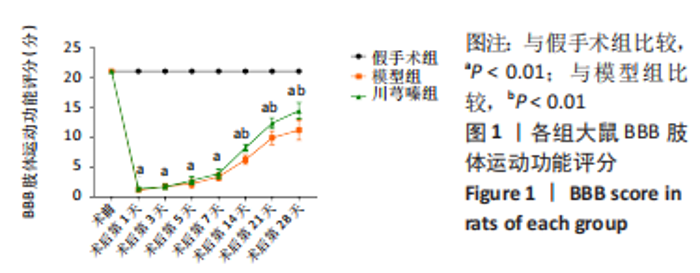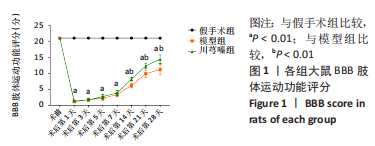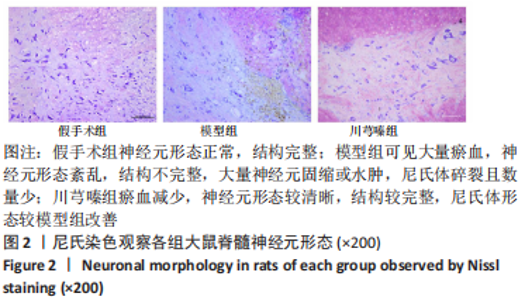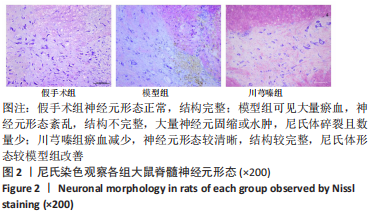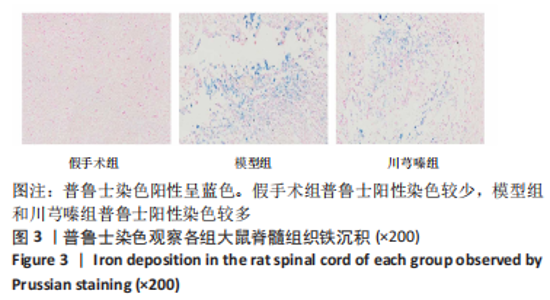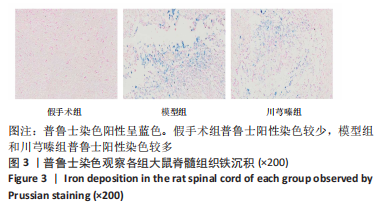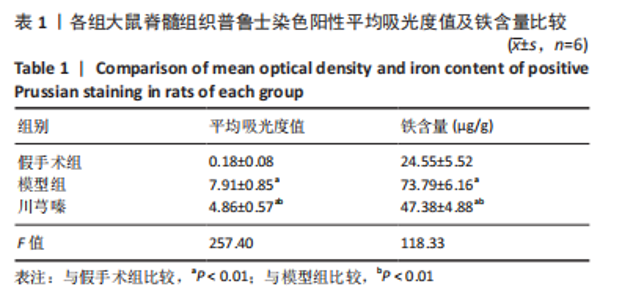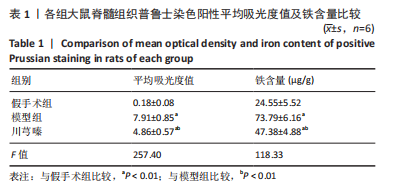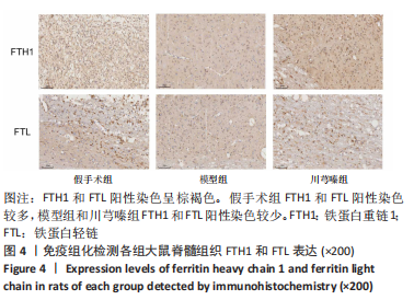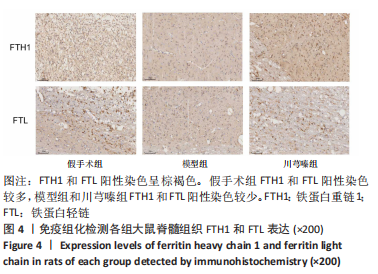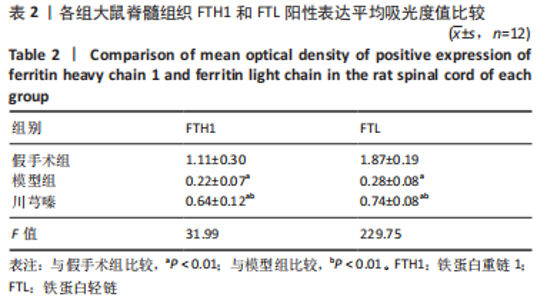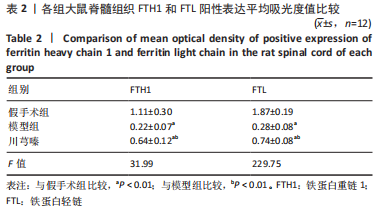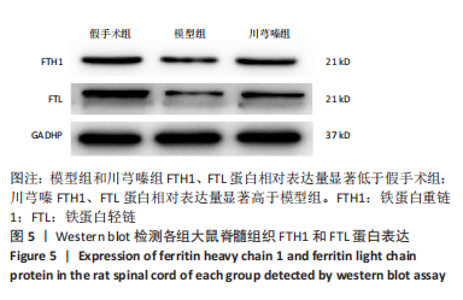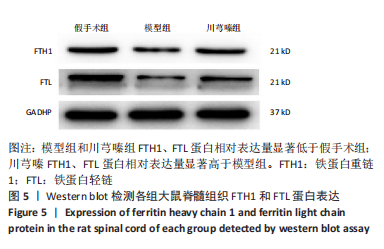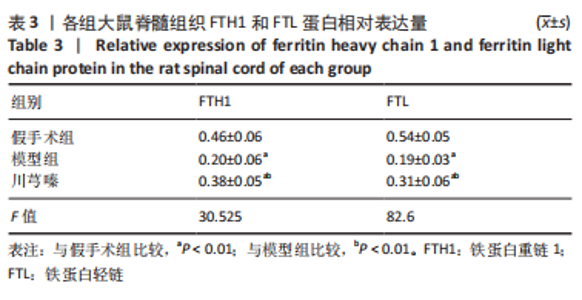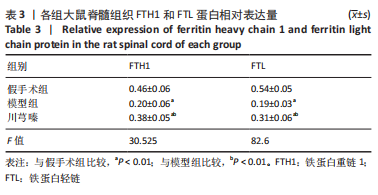[1] NOWROUZI B, ASSAN-LEBBE A, SHARMA B, et al. Spinal cord injury: a review of the most-cited publications. Eur Spine J. 2017;26(1):28-39.
[2] SHI Z, YUAN S, SHI L, et al. Programmed cell death in spinal cord injury pathogenesis and therapy. Cell Prolif. 2021;54(3):e12992.
[3] CHEN Y, LIU S, LI J, et al. The Latest View on the Mechanism of Ferroptosis and Its Research Progress in Spinal Cord Injury. Oxid Med Cell Longev. 2020;2020:6375938.
[4] TANG D, CHEN X, KANG R, et al. Ferroptosis: molecular mechanisms and health implications. Cell Res. 2021;31(2):107-125.
[5] CHEN X, YU C, KANG R, et al. Iron Metabolism in Ferroptosis. Front Cell Dev Biol. 2020;8:590226.
[6] ANANDHAN A, DODSON M, SCHMIDLIN CJ, et al. Breakdown of an Ironclad Defense System: The Critical Role of NRF2 in Mediating Ferroptosis. Cell Chem Biol. 2020;27(4):436-447.
[7] 刘明明,王磊,程建,等. 从督脉论治脊髓损伤的机制探讨[J]. 江西中医药,2020,51(7):21-22+57.
[8] 蒋昇源,邓博文,徐林,等.川芎嗪修复脊髓损伤的作用及机制[J]. 中国组织工程研究,2022,26(11):1799-1804.
[9] 郑怀亮,郭晓辉,李艳侠,等.川芎嗪对脊髓缺血再灌注损伤自噬相关蛋白影响的实验研究[J].中国中医骨伤科杂志,2019,27(12): 5-8+12.
[10] 都芳涛,方继峰,李兴晶,等.川芎嗪通过抗氧化及抗炎作用改善脊髓损伤[J].中医药学报,2018,46(6):95-98.
[11] 丁洁,徐天睿,范筱.补阳还五汤调控脊髓损伤后NLRP3炎症体介导炎症反应的机制[J]. 国际中医中药杂志,2020,42(6):552-556.
[12] 吴杨鹏,范筱,张俐.急性脊髓损伤动物模型的建立与评估[J]. 中国组织工程研究,2016,20(49):7341-7348.
[13] Cho SR, Kim Y, Kang HS, et al. Functional Recovery after the Transplantation of Neurally Differentiated Mesenchymal Stem Cells Derived from Bone Marrow in a Rat Model of Spinal Cord Injury. Cell Transplant. 2016;25:1423.
[14] 罗联忠,周逸敏,张俐.基于督脉枢机不利探讨脊髓损伤与血脊髓屏障[J].中华中医药杂志,2021,36(8):4515-4518.
[15] 钟远鸣,叶伟权,邱伟,等.中医药治疗脊髓损伤相关并发症的研究进展[J].海南医学院学报,10.13210/j.cnki.jhmu.20210824.003.
[16] 范筱,张俐.益气活血法调控脊髓损伤后相关基因的表达[J].中华中医药杂志,2017,32(3):1168-1171.
[17] 孙忠人,胡其回,郭峥,等. 基于《黄帝内经》“治痿独取阳明”探析脊髓损伤的治疗[J]. 长春中医药大学学报,2022,38(3):249-252.
[18] TANG D, CHEN X, KANG R, et al. Ferroptosis: molecular mechanisms and health implications. Cell Res. 2021;31(2):107-125.
[19] STOCKWELL BR, FRIEDMANN ANGELI JP, BAYIR H, et al. Ferroptosis: A Regulated Cell Death Nexus Linking Metabolism, Redox Biology, and Disease. Cell. 2017;171(2):273-285.
[20] FENG Z, MIN L, CHEN H, et al. Iron overload in the motor cortex induces neuronal ferroptosis following spinal cord injury. Redox Biol. 2021;43:101984.
[21] 张毅,祁文,吴迪,等. 基于转录组测序技术研究川芎嗪对急性脊髓损伤模型大鼠基因表达的影响[J].中国药房,2020,31(11):1327-1335.
[22] 王小菊,苏军.丹参川芎嗪对大鼠脊髓损伤后神经功能恢复的作用[J].西南国防医药,2018,28(11):1063-1066.
[23] 郭晓辉,郑怀亮,李艳侠,等.川芎嗪对脊髓缺血再灌注损伤模型大鼠细胞自噬相关蛋白的影响[J]. 国际中医中药杂志,2019,41(8): 843-846.
[24] 吴晓明,高文山,王静,等.盐酸川芎嗪联合骨髓间充质干细胞移植对脊髓损伤模型大鼠的神经保护[J].中国组织工程研究,2016, 20(1):95-101.
[25] 孙忠人,徐思禹,田洪昭,等.中药及有效成分治疗脊髓损伤的研究概况[J].中华中医药杂志,2020,35(6):3003-3006.
[26] 濮琦琳,于雪峰,朱燕,等.川芎嗪注射液对大鼠急性脊髓损伤后脊髓组织中MDA和SOD水平的影响[J].今日药学,2017,27(2):96-98.
[27] 陈星,丁永利,李现林,等. 川芎嗪对急性脊髓损伤大鼠模型GFAP、cPLA2表达的影响[J].中国现代医学杂志,2017,27(7):9-14.
[28] CHEN YX, ZULIYAER T, LIU B, et al. Sodium selenite promotes neurological function recovery after spinal cord injury by inhibiting ferroptosis. Neural Regen Res. 2022;17(12):2702-2709.
[29] SHEN L, LIN D, LI X, et al. Ferroptosis in Acute Central Nervous System Injuries: The Future Direction?.Front Cell Dev Biol. 2020;8:594.
[30] HU X, XU Y, JIN C, et al. Progress in Understanding Ferroptosis and Its Targeting for Therapeutic Benefits in Traumatic Brain and Spinal Cord Injuries. Front Cell Dev Biol. 2021;9:705786.
[31] LI Y, CHENG JX, YANG HH, et al. Transferrin receptor 1 plays an important role in muscle development and denervation-induced muscular atrophy. Neural Regen Res. 2021;16(7):1308-1316.
|
